Greek cuisine: World’s No. 2 cuisine healthy and hearty

SKOPELOS, Greece – At the tranquil end of Skopelos’ harbor, the ubiquitous trappings of Greek tourism give way to a Greece from long ago. On a mid-80s August day with the sun as bright as Zeus’ throne, fishing boats bobbed up and down. Greece’s blue-and-white striped flags above waved in the warm, gentle wind.
A middle-aged, heavy-set man with a face that has seen a lot of sun and wind mended his nets in the shade of his small fishing boat. Rigas Gripiotis waved to him from a table outside his restaurant, nestled at the corner of the harbor away from the crowds. Yannis Vareteos is one of Rigas’ two fishermen. They bring him red snapper and white grouper and octopus and swordfish and sea bass among others.
Beyond Skopelos’ harbor, a forest climbs up a mountain on the greenest island in Greece. The classic Greek dishes of gyros, souvlaki, moussaka and Greek salad are loved from Boston to Brisbane. But the foundation 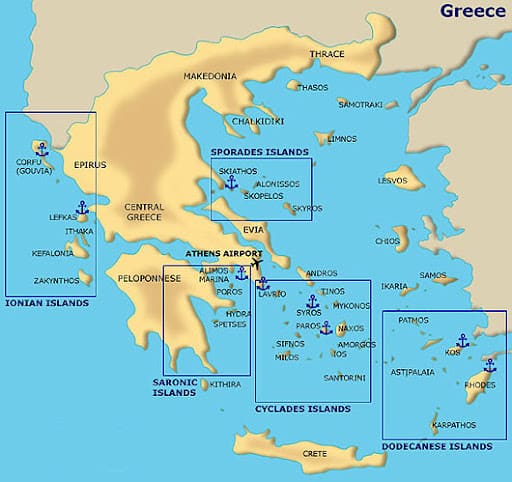 of these dishes, in Greece, the heartbeat of true Greek cuisine, can be found in these forests.
of these dishes, in Greece, the heartbeat of true Greek cuisine, can be found in these forests.
It’s where thyme, sage and fennel grow wild. Tomatoes seem sweeter here. Peppers have more bite. TasteAtlas, an online travel guide for international food, named Greece the second-best cuisine in the world last year behind Italy. (U.S. was 13th.) Rigas pointed beyond the sea to the trees.
“It’s the ingredients, first of all,” he said. “We can grow them in Greece in a soil that’s rich of everything. It’s like you put a seed on the soil and it grows something. That’s blessed from the gods.”
Until I moved to Italy the first time in 2001, Greece was my favorite country. Yes, it has 6,000 islands and each one has its own characteristics. The beaches are beautiful. And don’t you love the way Santorini’s snow-white domes are set off by the royal blue of the Aegean Sea? But a draw that has lured me to Greece 10 times has been the food.
I purposely don’t eat feta for a month before my annual August trip to Greece just to have that rush of the first bite from the real thing. I dream of lean grilled chicken souvlaki on a skewer with an ice-cold Mythos beer in a dive taverna by the sea. Every time I leave Greece, I swear if I eat one more kalamata olive I’ll start channeling Aristotle.
I returned from my latest trip Friday and this time I dug deeper into Greek cuisine. I tried new dishes, fed my cravings with old ones and interviewed two renowned Greek chefs on different planes of the Greek restaurant scene. While Rigas runs the homey, thriving Ta Kymata which has been in his family since 1896, award-winning Gikas Xenakis is the star chef of the high-end Aleria Restaurant in the heart of Athens.
Both are small-town boys. Both are trained in fine cooking schools. Both speak of Greek cuisine like Michelangelo spoke of marble.
“I don’t know if we’re first or second,” Gikas said, “but between Italy, Lebanese and Greek cuisine, it’s the best. It’s my favorite.”

Health benefits
According to the United Nations Population Division, the average life expectancy in Greece this year is 82.0 years, well over the world average of 73.4. Despite a blood-stained history dating back to mankind’s earliest civilizations and a recent economic crisis that brought Greece to its knees, its attention to health has never wavered.
“A lot of other countries, they try to invade Greece and to make them slaves,” Rigas said. “They didn’t have money. They had to grow their own vegetables. And make their own food. They needed good food because the men were working with nature as farmers. He needs to be strong. All these created this background of good food.
“It has to do with generation to generation to have good food and a quality of life.”
Look at the basics of Greek cuisine: tomatoes, cucumbers, olives, olive oil, herbs, rice. They are high in nutrients and antioxidants. Skopelos is not only the greenest island in Greece, it is covered in olive trees. Greece’s extra virgin olive oil has omega-3 fatty acids for protection against heart disease, the world’s No. 1 cause of death. It also is an anti-inflammatory that lowers blood pressure.
Tzatziki, the cucumber spread you can get on every Greek table from Crete to Thessaloniki, is tasty but low in carbohydrates and fat. Dolmades, the low-calorie, rice-stuffed grape leaves, provide fiber and vitamins.
The array of fresh vegetables lowers blood pressure, reduces heart disease, stroke and some types of cancer, not to mention make it easy to digest.
Spinach, oregano, parsley and so many other herbs are antioxidants that reduce cancer, Parkinson’s disease, Alzheimer’s, Type-2 diabetes and cardiovascular disease.
Want to live longer? Eat lemons. They’re huge in the Greek kitchen. They’re sprinkled over salads, meat, fish, chicken and mixed with tzatziki and hummus, the spread made from chickpeas. The lemon makes blood vessels more flexible, lowering blood pressure.
“The Greek cuisine is a poor cuisine,” Gikas said. “We use a lot of vegetables. In the past, we eat meat once every 30 days. Now we go with the globalization of the food.”
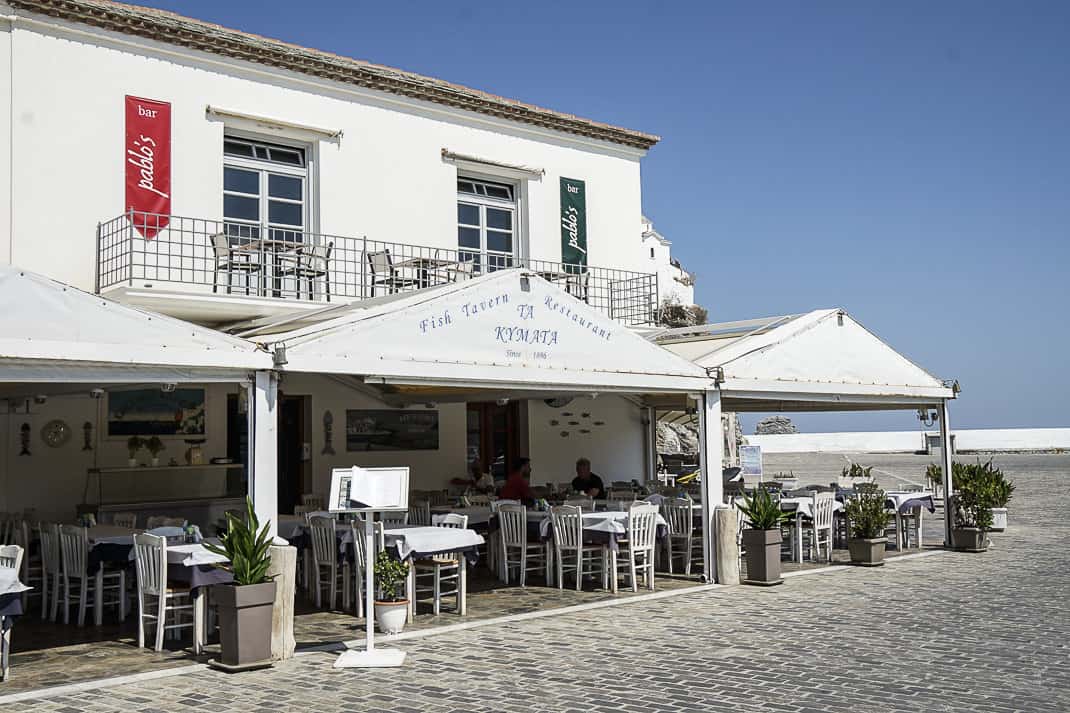
Greek cuisine dishes
Rigas didn’t grow up wanting to follow in his family footsteps on the dock. He wanted to follow in the footsteps of NBA players. He was a promising point guard on the island and at 16 he asked his dad if he could go to Athens and play.
“He said, ‘No way. Athens is very dangerous to be alone,’” Rigas said. “‘You stay here and see what happens.’”
So he stayed, did his military service and in 1999 after working a summer at the restaurant he went to Thessaloniki for college. He wound up in culinary school for four years.
That took him to New York where he worked for two years at Ethos, an upscale Greek restaurant near Central Park. Now 44, Rigas still looks fit enough to lead a fast break. Tall, trim with neat, close-cropped hair, he talked about the mistakes Greek restaurants in the U.S. make.
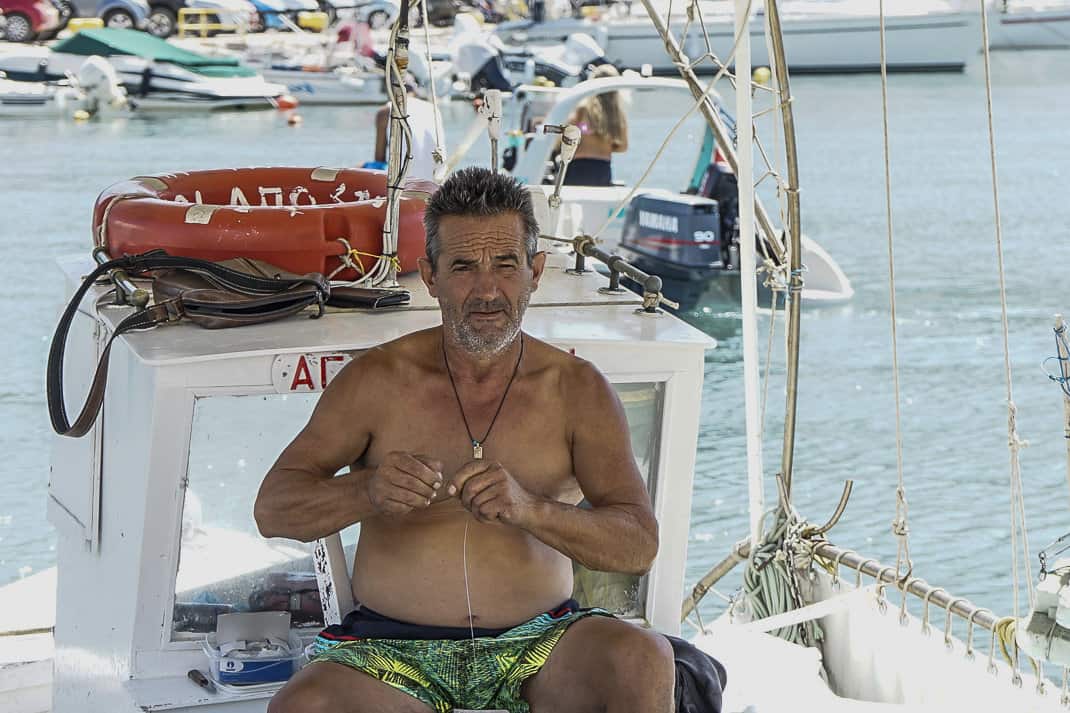
“They try to cook Greek food for U.S. citizens,” he said. “The people you have as a customer, they don’t like the food the way it comes. They want their own way of eating: ‘Oh, please don’t put too much feta.’ Or ‘Don’t put too much olives because I’m on a diet.’ So the food changes.”
My problem with Greek restaurants in the U.S. is some don’t have a clue. They put lettuce in a Greek salad. Lettuce? That’s like putting lettuce in an ice-cream sundae.
Eating at Ta Kymata is like eating in the home of a Greek grandmother. Rigas’ whole family is involved in the restaurant. The place is adorned with old, grainy family photos, especially of his father, Angelos.
“My best teacher and mentor was my father,” Rigas said. “Then my mother. Mother was working for six men in the house. Four brothers and my father. She was cooking amazing, to be honest. My father worked all day here. The winter he wanted a good warm plate of food with his family. She learned how to cook.”
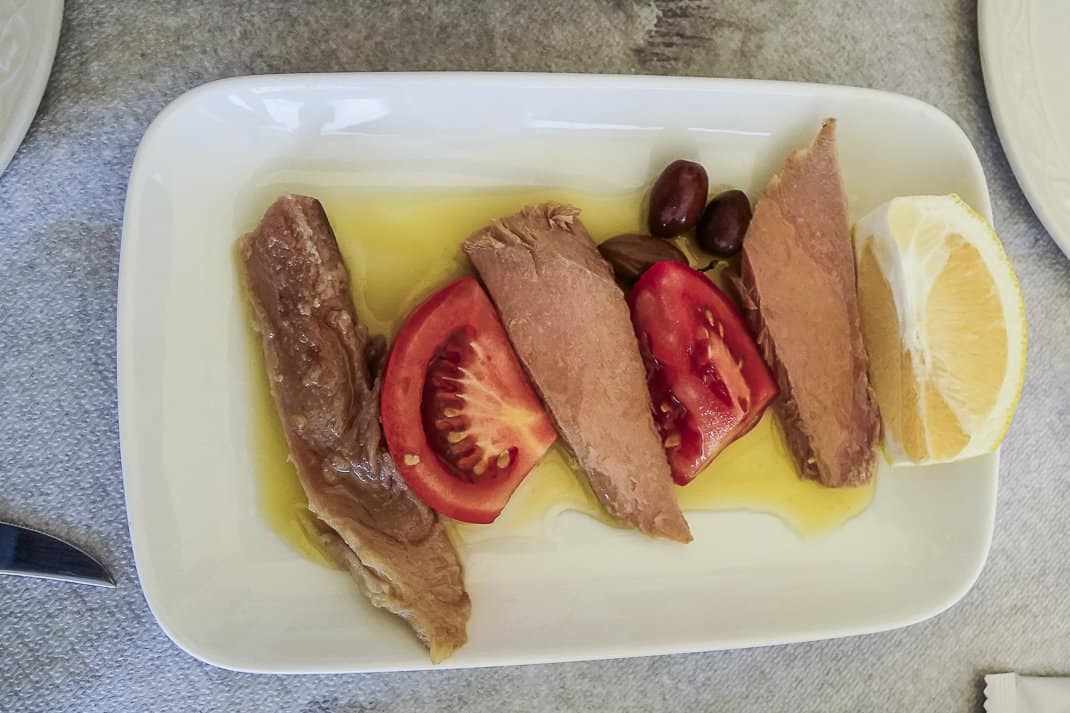
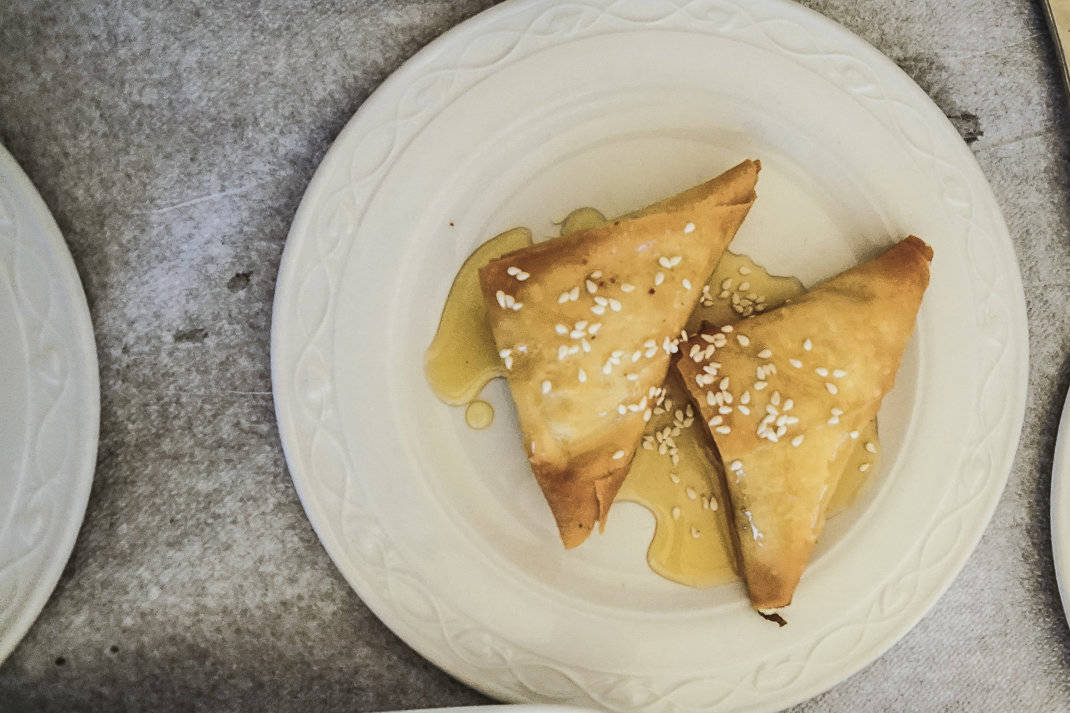
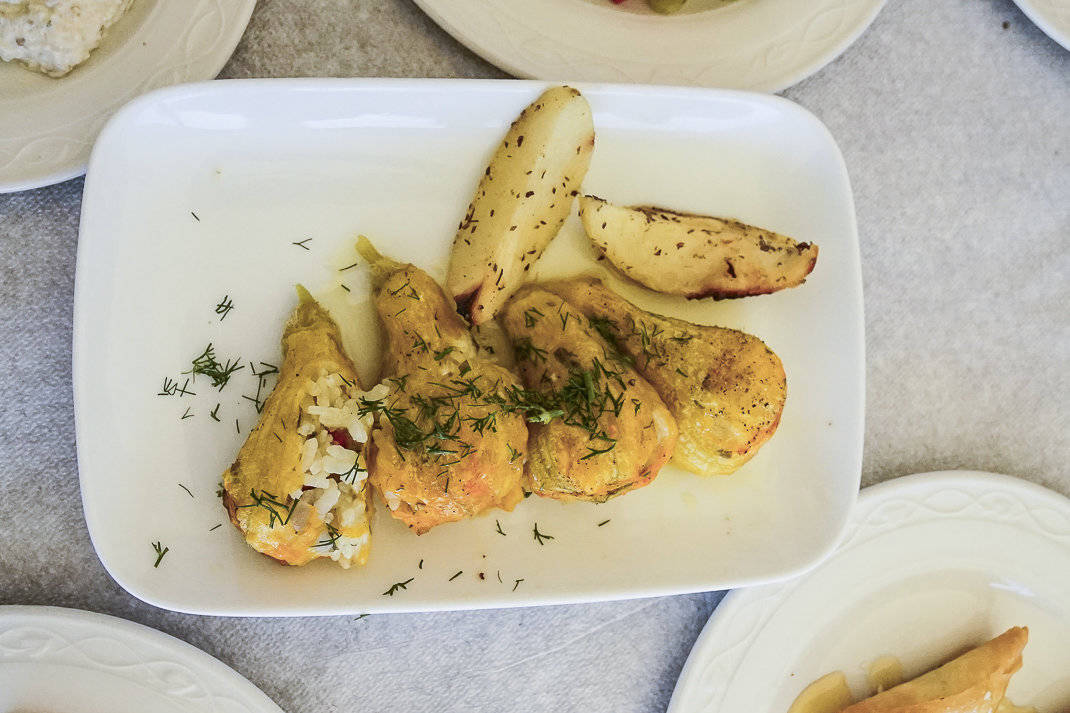
After we talked, his waiter brought out a long stream of dishes. First came Greek appetizers: baby tuna, little Greek salads, taramasalata (a spread made from fish roe), aubergine (eggplant) spread. Then came cheese croquettes, gooey, lightly breaded fried cheese balls.
The highlight and what I developed a small dependency on was bureki, a small piece of feta wrapped in filo dough and covered in honey and sesame seeds, served warm. Also brought were zucchini flowers stuffed with rice and vegetables.
For my main course I had shrimp saganaki, big shrimp covered in a spicy tomato sauce.
With an ice-cold Mythos beer in the frosted mugs in which the Greeks ingeniously serve beer, it was an afternoon Odysseus would’ve loved.
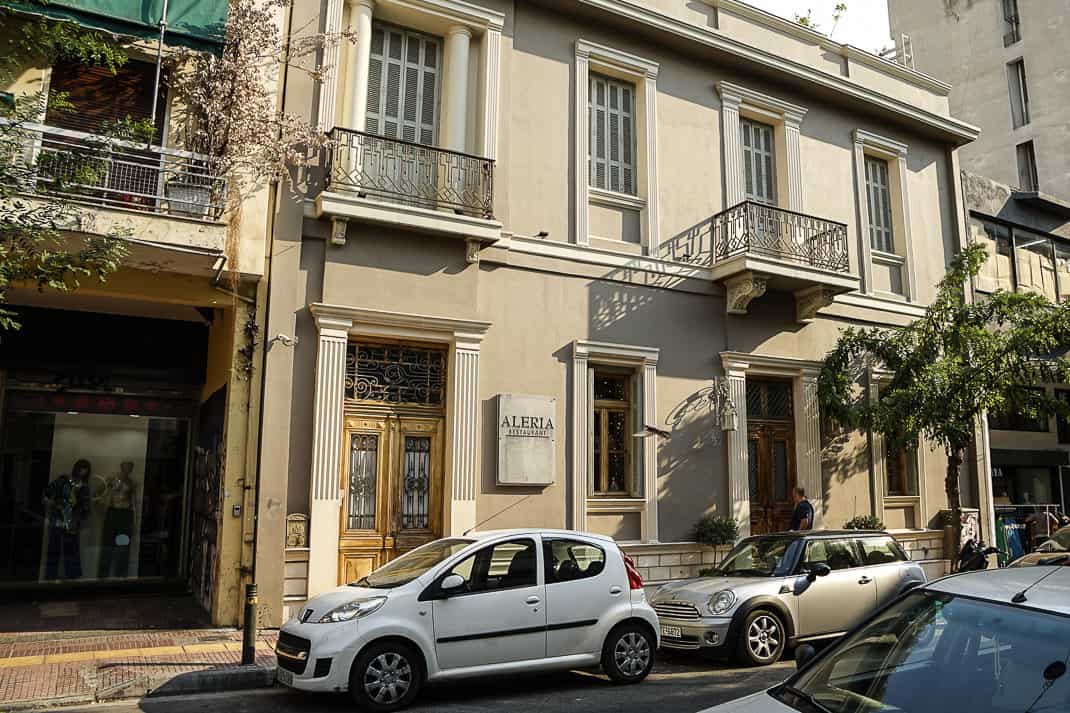
Aleria
In our many trips to Athens, Marina and I never ventured outside the Plaka farther than Syntagma Square, the heartbeat of the city. With an extra day, we went to a neighborhood even Rick Steves had never heard of, let alone visited.
Metaxourgio is in the northern part of Athens about two miles from the Acropolis. It’s just south of Sepolia, the tough neighborhood that hardened Giannis Antekounmpo into an NBA Most Valuable Player. Our cab driver said we were two of the few tourists he’s taken to Metaxourgio. Signs of the abandonment from the late 20th century are still evident in crumbling walls and skinny, stray cats that nearly made Marina cry.
But it’s also a neighborhood in transition. Thanks to Greece president Katerina Sakellaropoulou moving there, Metaxourgio is gentrifying into a hip center for new artists and fledgling restaurants.
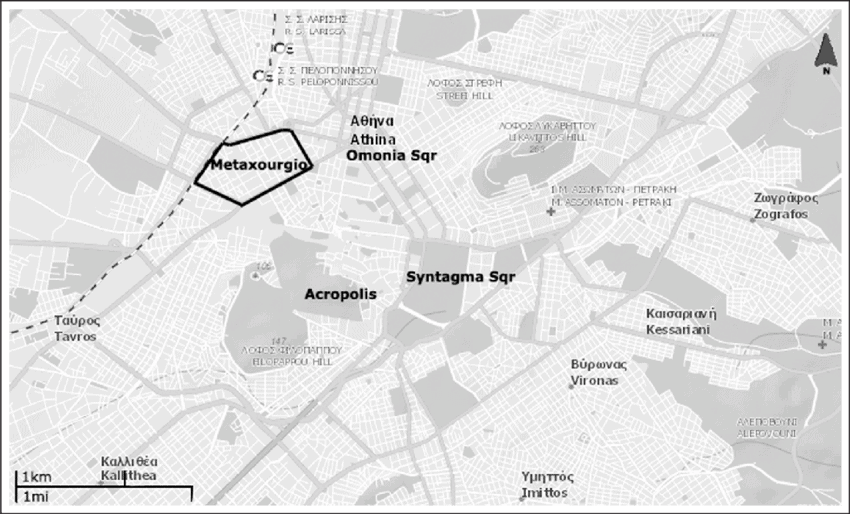
Aleria is one of those restaurants that put a bow on Metaxourgio’s rough edges. We sat in an open courtyard filled with trees, gardens with little statuettes and powerful fans. It was lined with long couches adorned with overstuffed pillows. Vines climbed the walls around a vintage clock. Wine bottles hung from branches.
It’s in a 120-year-old building. The mother of 40-year-old owner Nikiforos Kechagiadakis happened to walk by it one day 20 years ago and fell in love with the site. She bought it on the spot and they spent about five years renovating it before opening in 2006.
Gikas Xenakis joined us. With his dark complexion, husky build, perfectly-coiffed black hair and beard, he looked as Greek as Poseidon atop a Doric column. Just 40, he has won the Toque d’Or award, given to Greece’s top chef six times. Gault Millau, a French restaurant guide, named him Greece’s Chef of the Year in 2020. For the last six years he has taught at the Le Mond culinary school where he also studied.
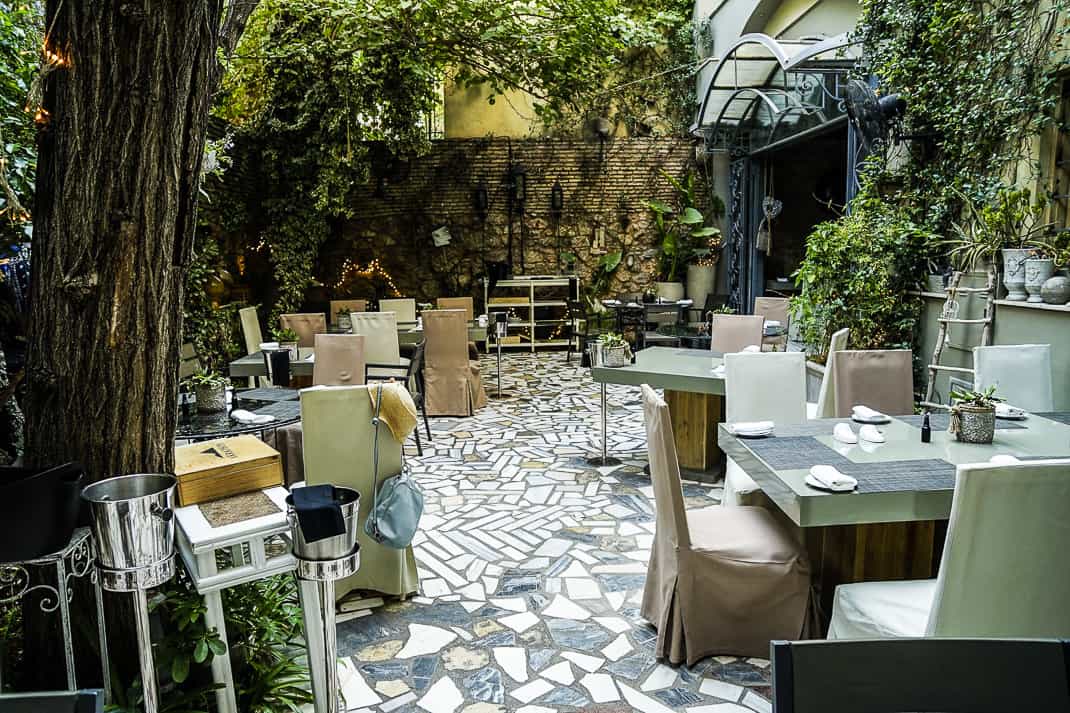
He doesn’t own Aleria but it’s his baby. Since 2011, he has nurtured it along with an ever-changing tasting menu with ingredients from Greek farms. Ravioli filled with chestnuts, chanterelle and black truffles. Lamb with eggplant and cumin. Pumpkin mousse. Moussaka with mushrooms and potato bechamel.
He has helped Athens evolve away from gyros, souvlaki and a hunk of feta.
“This is the best period of the restaurant scene Athens has seen in years,” he said. “There are a lot of new chefs who have come to the foreground. They’ve brought a lot of ideas and inspiration from abroad. There’s an explosion, a renaissance of gastronomical portions that’s happening in Athens and Greece in general.”
Gikas hails from the town of Thebes, one of the world’s oldest cities dating back to the Bronze Age in about 1000 B.C. and made famous in The Iliad and from various mentions in Greek mythology. It’s in Thebes where he learned what to cook – and what not to cook.
“I was really picky the way my mother cooked and presented,” he said.
We declined the offer for the free meal, citing my professional ethics and Marina’s complete inability to eat six courses, even a tasting menu. But Gikas insisted we taste a few, along with carefully paired Greek wines, and I agreed while insisting on paying an appropriate price.
I may have underpaid.
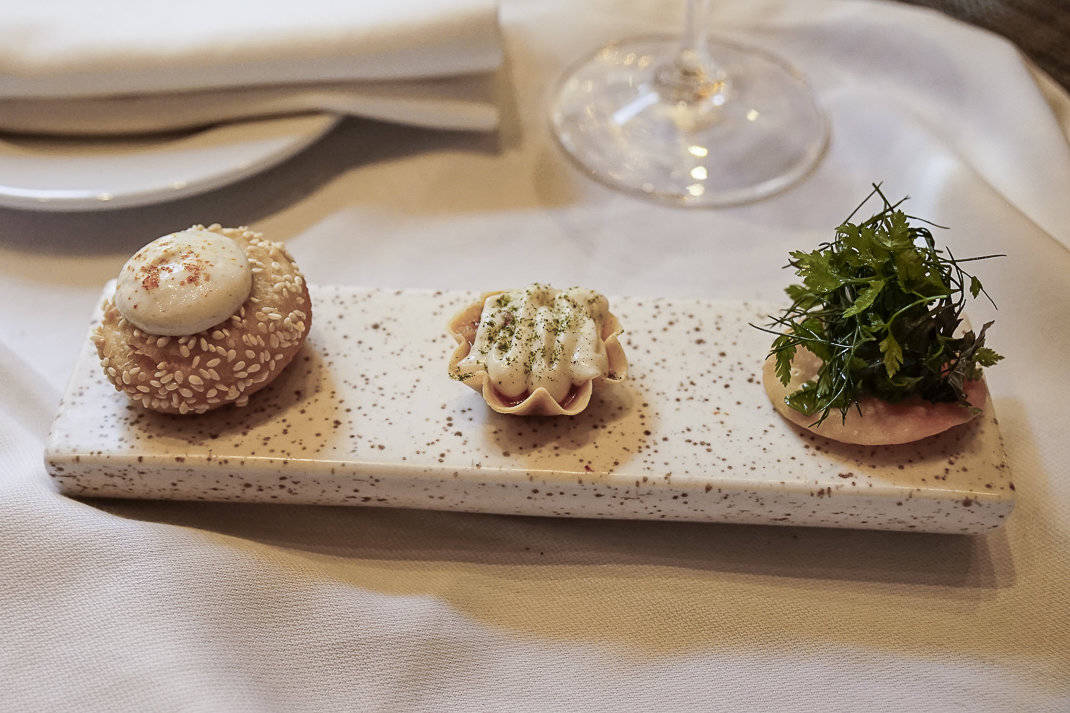
The tastings
First came a long, narrow plate with three appetizers: Amuse-bouche, hortopita pastry with greens cooked with feta; a mini tart with briam (roasted vegetables) and goat cheese; and koulouri, sesame bread with tarama, a sauce made from cured fish roe.
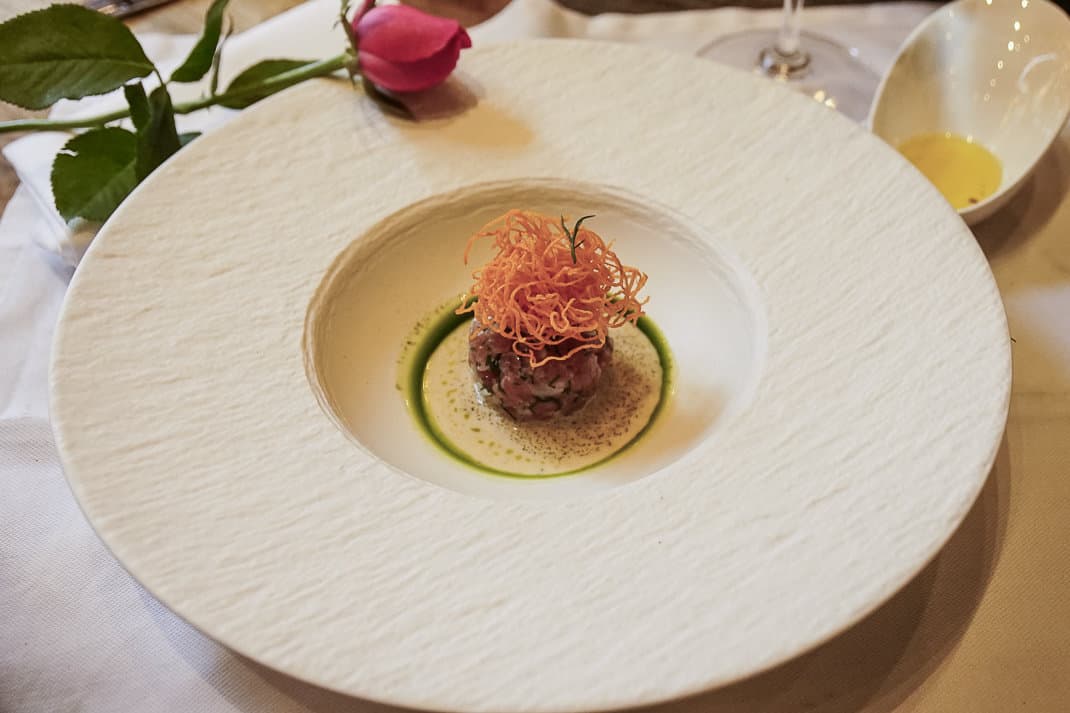
Then came giouvarlakia, tartare made with beef and rice topped with avgolemono, a cream made from lemon, eggs and chicken broth. Next: slow-cooked lamb with eggplant stuffed with sour frumenty (hulled wheat boiled in milk and seasoned with cinnamon and sugar), with chickpeas and cumin-spiked broth.
Finally, we finished with apricot mixed with caramelized white chocolate, apricot broth atop an almond biscuit and rosemary Bavarian cream.
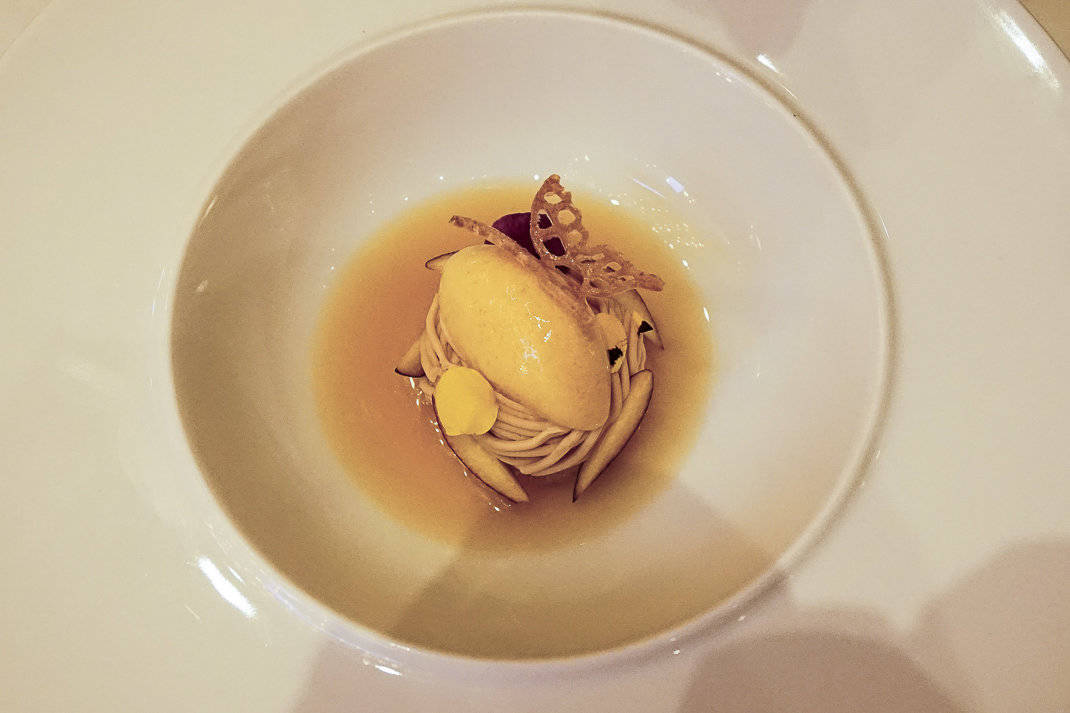
It was small but adventurous and spectacular. We promised we’d return for the full tasting menu. I told Marina to not eat lunch that day.

Elsewhere in Greece
Marina and I have three other must restaurants in Greece. Our annual first night meal is at Taverna Psarra. In the heart of the Plaka, up a hill, it has a beautiful terrace where we could see the Acropolis sitting atop the giant rock under the moon.
It’s here where we always have our trip’s first Greek salad. It’s so simple. It’s so good. Tomatoes. Cucumbers. Kalamata olives. Onions. Bell peppers. With a big hunk of feta cheese and sprinkled with oregano, capers and olive oil. I call it the world’s perfect dish.
“I agree with that,” Gikas told me later. “It’s a good example. You have the big complexity of flavors. You have the bitterness of the green peppers. You have the spicy of the onion. You have the sweet and sour taste of the tomatoes. You have the saltiness of the capers. You have extra virgin olive oil. You have cucumbers for freshness.”
On Skopelos we make an annual trip from our tiny village of Panormos 30 minutes north to the village of Loutraki, next to the port town of Glossa. Flisvos is our favorite seafood restaurant where we sit in an open-air terrace on the sea while watching the sun set behind Skopelos’ hills.
They have great imagination at this place. How do you like your octopus? Try it in plum sauce. It’s superb. Marina’s fresh, grilled calamari looked as if it swam onto her plate.
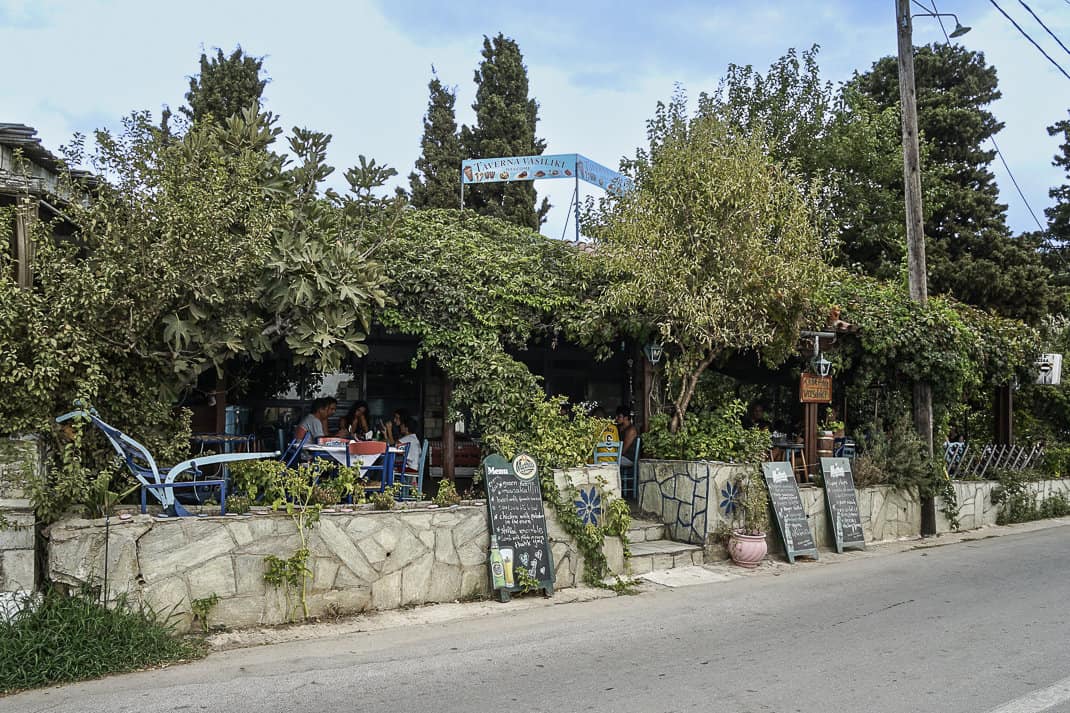
Our go-to place every day for our post-beach lunch is Taverna Vasiliki. It’s as casual as someone’s backyard with wooden tables on a concrete floor and wooden fence around it. Vasiliki and her family whisk big mugs of ice-cold beer and gyros to locals and tourists alike.
It’s here where Vasiliki, a bubbly, fit businesswoman with a big head of curly, brown hair, taught me the difference between gyros and souvlaki. Gyros are cooked on a rotisserie, the long vertical spits you often see behind display windows in Greek restaurants. Souvlaki are grilled pieces of lean meat. A gyros pita is a sandwich inside pita bread and stuffed with French fries which is mostly served in fast-food takeaway joints all over the world.
I’ll leave you with one of the best dishes I had in Greece. Soutzoukakia are Greek meatballs in a delicious tomato sauce laced with red wine, cinnamon, garlic, olive oil and onion. Courtesy of Vasiliki, here is the recipe:
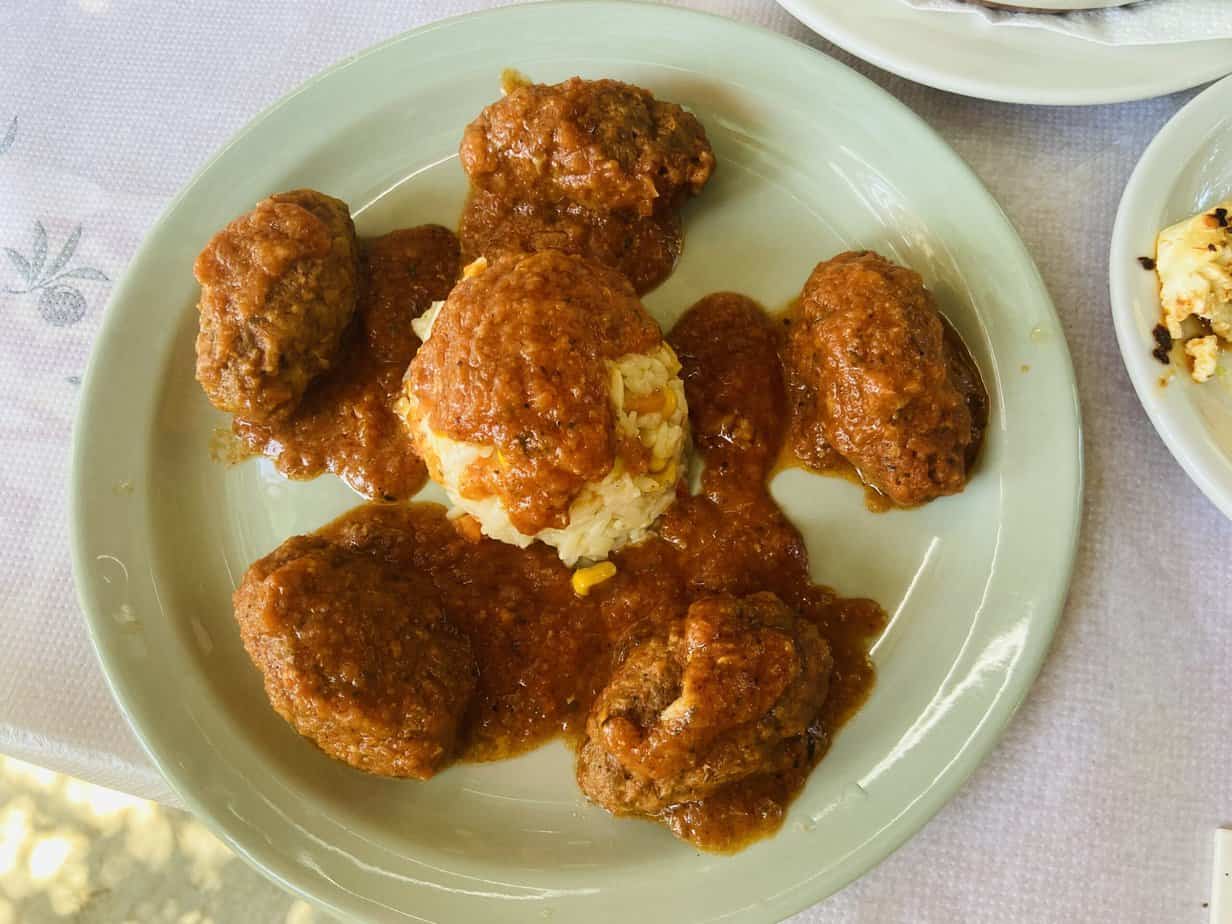
A recipe for soutzoukakia
Take minced beef and put inside a little minced pork. Throw it in a blender with fresh tomato sauce. Remove and add red wine. Sprinkle with cinnamon, garlic, olive oil, onion, salt and pepper. Put it in a bowl and knead it into balls. Slow cook it in a pan for 20 minutes.
To make the sauce, heat some oil in the pan. Fry onions then add some tomato paste, cumin, salt and pepper. When aroma ascends, add garlic and fry for a few more minutes. Pour in red wine to deglaze the pan and simmer until the alcohol has evaporated. Add the remaining tomato sauce ingredients, cover and let simmer until it begins to thicken .
Add the meatballs to the sauce and cover them thoroughly. Simmer for 30 minutes until the sauce thickens.
You can thank me later. Better yet. Go to Greece and thank Vasiliki.
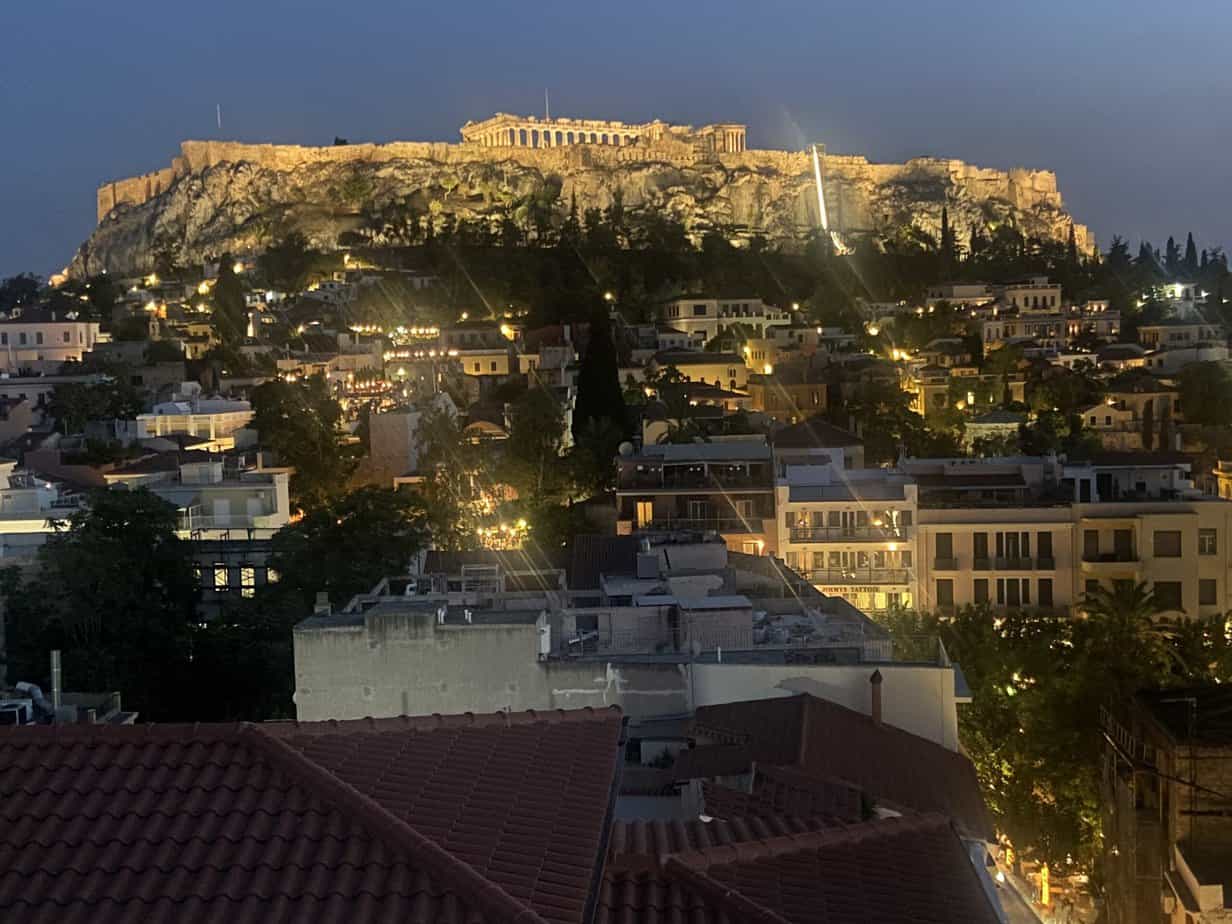
If you’re thinking of going …
How to get there: Sky Express has daily 40-minute flights from Athens to Skiathos. I paid €414 for two round-trip tickets in August. Numerous ferry companies make the 50-minute trip from Skiathos to Skopelos. I paid €58 for two round-trip tickets.
Where to stay: Panormous Beach Hotel, 30-2424-022711, https://www.panormosbeach.com/, info@panromosbeach.com. Located across the street and up a short hill from Panormos Beach, it has a great view of the sea with an infinity pool and a poolside bar. Friendly, helpful staff and excellent breakfast. I paid €822.50 for seven nights.
Where to eat: Aleria, M. Alexandrou str., Athens, 30-210-522-2633, www.aleria.gr, info@aleria.gr, 7 p.m-12:30 a.m. Monday-Saturday. High-end restaurant with award-winning chef. Six-course tasting menu only for €70. Book a week ahead.
Ta Kymata, Old Port, Skopelos, 30-24240-22381, tavernatakymata@hotmail.com, 9 a.m.-midnight. Nearly 130-year-old family run restaurant on far end of port specializing in seafood. Mains starting at €14
Taverna Vasiliki, Epar. Od., Panormos, Skopelos, 1-10 p.m. All traditional Greek dishes plus some gourmet items at cheap prices.
Flisvos Restaurant, Loutraki, Skopelos, 30.242-403-3856, flisvosrestaurant@gmail.com, noon-midnight. Seafood restaurant on the water with beautiful sunset views at reasonable prices.
When to go: July and August are ideal for warm seas. Every day our last week in August was mid-80s with bright sunshine. However, it is crowded and more expensive. Weather turns cooler and wetter in September. Skopelos all but shuts down in winter.
For more information: Athens City Information Kiosk, www.this isathens.org, Piateia Syntagmatos, Syntagma Square, 9 a.m.-6 p.m. There is also a branch at the airport.
Skopelos.com.


September 6, 2023 @ 4:51 am
Great stuff John, as always. My family and I went to Greece this summer. We went to Ancient Olympia, Kefalonia, Lefkada, Meteora, Cape Sounio and Athens. Incredible country….incredible people and absolutely incredible food. You could’ve left me there.
Thanks for all the great content you put out there.
Ciao,
Paul
September 7, 2023 @ 3:48 pm
Thanks, Paul. You surely left Greece more healthy than when you arrived — unless you drank as much ouzo as I did.
September 6, 2023 @ 7:26 am
Always great content John.
September 6, 2023 @ 7:38 am
Great review, John. One of your best!
September 7, 2023 @ 3:47 pm
Thanks, Bernie. The best writing comes from the heart — or, in this case, the stomach.